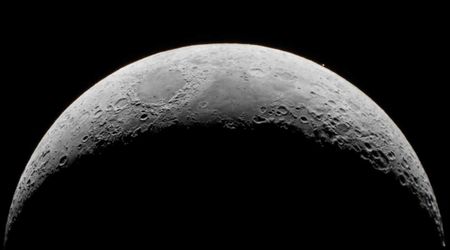NASA drops plan to send 'first woman and first person of color' to the moon

NASA is preparing for a revisit to the moon as the space agency plans to engage in the Artemis project for lunar missions. One of the long-standing promises of this mission was to land the 'first woman and person of color' on the moon. However, the recent shift in administration has led NASA to drop this initiative. President Donald J Trump directed the elimination of diversity, equity, and inclusion (“DEI”) initiatives in both the private sector and the federal government. As a result, the Artemis landing page of NASA’s website now has a revised promise about the aim of the Artemis III lunar mission.

After President Trump's order, his administration is moving towards stopping the diversity, equity and inclusion programs across the U.S. government. Efforts have been made to eliminate what was stated as "immense public waste and shameful discrimination," according to a statement issued by The White House. NASA continues to cancel programs dedicated to the DEIA (diversity, equity, inclusion, and accessibility) and remove any language related to these efforts from its websites. However, it is unclear how the removal of this language will affect astronaut assignments for NASA's moon missions. The Artemis program was first formed during the first Trump administration in 2019.

The space agency made various changes over the recent years to be inclusive, respect diversity, and move away from its reputation of employing only white men. The six Apollo missions between 1969 and 1972 took 12 people, who were all white men aged between 36 and 47, as per The Guardian. Artemis III is scheduled to land on the surface of the moon in mid-2027, with its crew yet to be announced. However, a NASA spokesperson stated that "it is important to note that the change in language does not indicate a change in crew assignments."

The Artemis landing page of NASA’s website previously had the words: “NASA will land the first woman, first person of color, and first international partner astronaut on the Moon using innovative technologies to explore more of the lunar surface than ever before.” This was seen removed from the latest version, as per Space.com. The agency’s swift action to remove words that supported the previous initiative might also reflect its needs. Eliminating previous policies and funding meant that they needed to favor the present government for the same requirements.

NASA spokesperson Allard Beutel also added that "in accordance with an Executive Order signed by President Trump, NASA is updating its language to better reflect the core mission of the Artemis campaign: returning astronauts to the lunar surface. NASA remains committed to aligning with White House guidance and ensuring mission success." Acting NASA administrator Janet Petro informed the agency employees by memo to follow the executive order. It stated that the DEIA programs "divided Americans by race, wasted taxpayer dollars, and resulted in shameful discrimination."

The current version on the site states, "With NASA’s Artemis campaign, we are exploring the moon for scientific discovery, technology advancement, and to learn how to live and work on another world as we prepare for human missions to Mars." NASA is not the only federally funded agency to comply with the White House orders. The space agency also reduced its workforce by significant numbers as part of the Trump administration's efforts to reduce federal spending. The extent of cuts in the agency's budgets or workforce is unknown.









